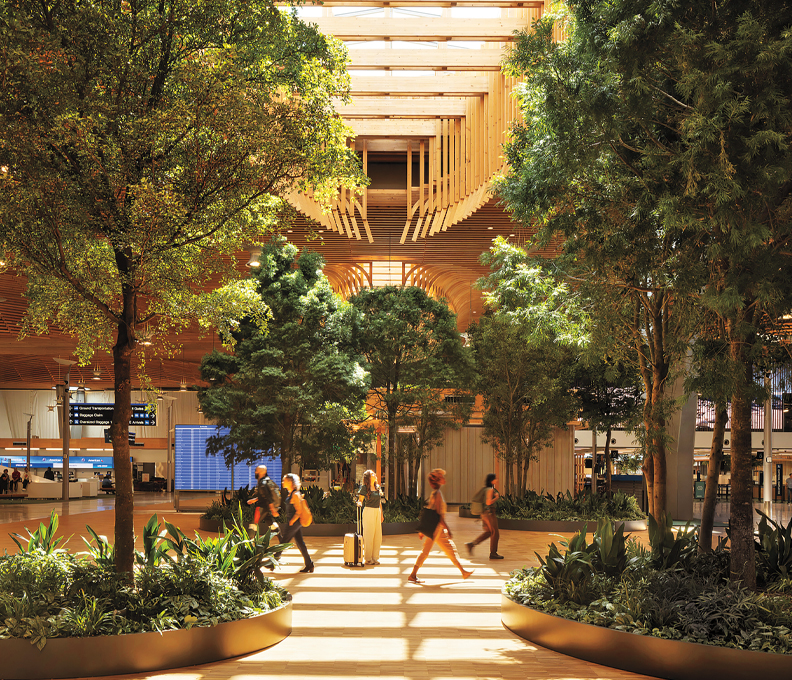These 4 Start-Ups Are Revolutionizing Green Travel
These inspiring businesses are coming up with innovative transport ideas
by Boyd Farrow
April 10, 2023
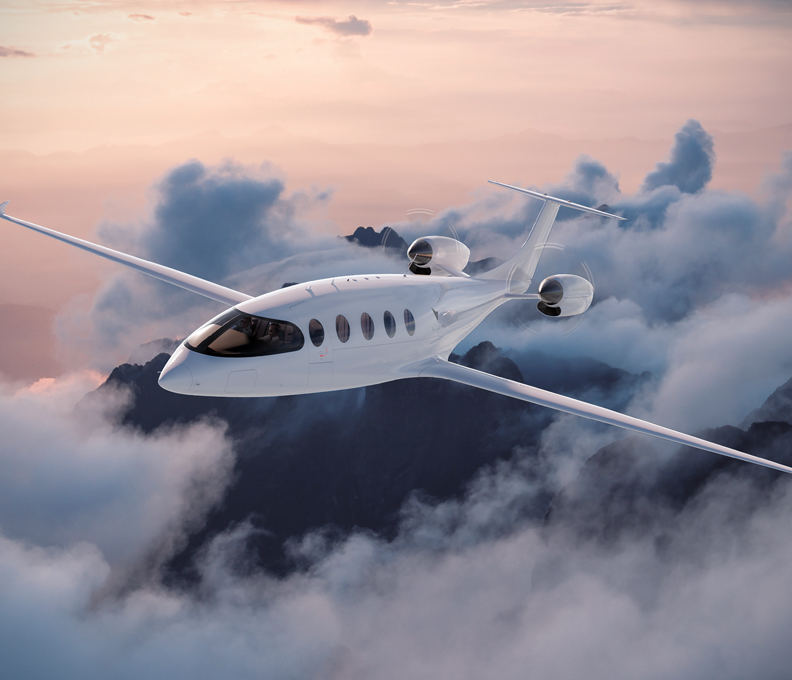
Eviation’s Alice prototype aircraft / Photo: Courtesy of Eviation
Even without the chip shortage and the recent cascade of Russia-triggered gas price increases, our attitude to travel is changing rapidly as we confront the pressing challenge of how to cut carbon emissions. Over the last few months, some European countries have started to subsidize public transport, with France even banning all short-haul domestic flights when there is a train alternative of 2.5 hours or less. In the U.S., the government has set aside $66 billion to allow railways operator Amtrak to reestablish itself as a viable nationwide transportation option.
Meanwhile, on both sides of the Atlantic, hundreds of start-ups are coming up with innovative and inspiring green transport ideas, from software-laden smart bikes to batteries that divert energy from electric vehicles to their owners’ homes. Here are four of the more interesting business concepts.
Microlino
“‘All the car you need’ is not just a slogan,” says Merlin Ouboter, cofounder of Microlino, the electric vehicle that looks like it burst out of a Pixar movie. “This is the future of driving.”
The Ouboters—father Wim and sons Merlin and Oliver—are the Swiss family behind the Micro electric scooters. Their latest brainchild is a reimagining of the Isetta bubble car from the 1950s, positioned as a lifestyle purchase for eco-minded urbanites.
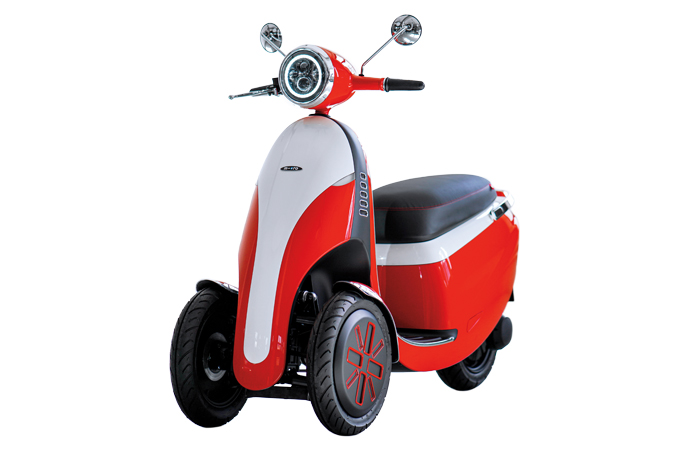
Microletta electric scooter / Photo: Courtesy of Microletta
“On average, a car is occupied by 1.2 people, traveling a daily distance of less than 20 miles,” says Ouboter. “The Microlino can go 55 miles per hour, has a 142-mile range and can comfortably carry two people and three crates of beer.”
Ouboter is convinced micro vehicles will soon become the main mode of private transport in cities. “For vacations or trips to IKEA,” he says, “there are enough car-sharing options.”
Apart from its cute retro look, the Microlino features a front-opening “fridge door” that gives it a competitive edge. “Three cars can fit in one parking spot,” he notes.
Manufactured in Turin, Italy, between 4,500 and 5,000 Microlino vehicles are expected to roll out across Europe this year, a figure that is set to more than double in 2024. Judging by the number of preorders, Ouboter says the company’s biggest challenge is meeting growing demand.
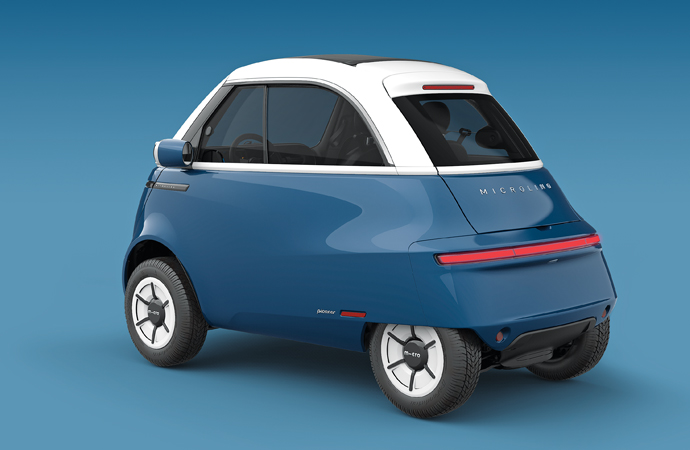
Microlino Pioneer in Atlantis Blue / Photo: Courtesy of Microlino
Although the price for the basic model starts at $16,115, the family is resisting moving production as it scales up. “We want this to look and feel like a long-lasting, quality product,” says Ouboter. “As a Swiss company, we can never compete on prices. But we will appeal to design-conscious consumers who might buy premium products from Apple or Alessi.” Targeting the high-end market will, inevitably, lead to limited-edition versions of the vehicle and almost endless customization opportunities, from paint jobs and sound systems to what Ouboter calls a “cargo” version—which conjures up images of a shiny espresso machine on wheels.
This summer will see the debut of the Microlino Spiaggina, “a summer model” with a white and blue striped fabric roof that is completely open at the sides and rear. The beach vibe continues with a white and blue interior in vegan leather and a wooden floor.
Also set to enter production in 2023 is the Microlino Lite, a slightly lower-priced version aimed at younger customers. Classed as a heavy quadricycle, this model will have a top speed of 28 miles per hour, so it can be taken on highways. Just wait for the electric-scooter-riding teenagers to see one of these.
Napaway
It was when a pal zonked out in his lie-flat seat after their fortuitous upgrade to business class that Dan Aronov had his lightbulb moment. “My buddy had never been able to sleep on a plane before,” the former banker explains. “I thought, What if you could take those business-class suites and install them in a bus? You’d be able to offer travelers a high level of comfort at incredibly low prices.”
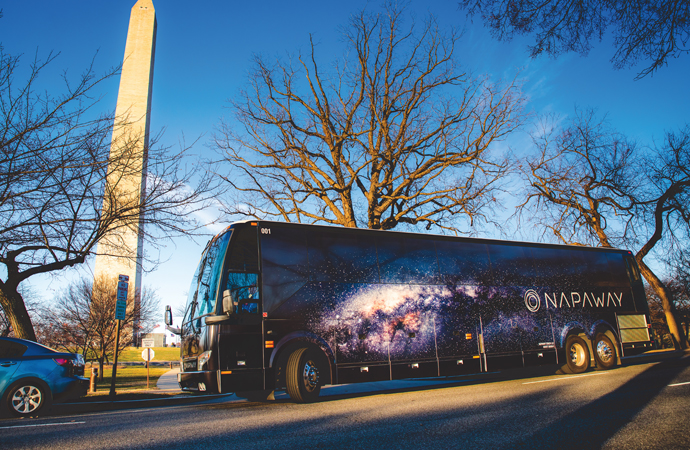
Napaway coach in Washington, D.C. / Photo: Courtesy of Napaway
After securing 18 such suites with Butterfly Flexible Seating Solutions, a Hong Kong industrial design studio used by several airlines, Aronov launched Napaway, which he describes as “a new type of premium sleeper coach service.” The 10- to 11-hour ride from Washington to Nashville—Napaway’s sole route so far—costs roughly the same as an economy flight, which takes less than two hours. However, for their ticket, bus passengers get more than 13 square feet of private space, which they can configure into an office, lounge or 6.5-foot-long bed with memory foam mattress. Pillows—“real ones, not airline pillows”—blankets, amenity kits and bottled water are provided, as is free fast Wi-Fi and an entertainment system.
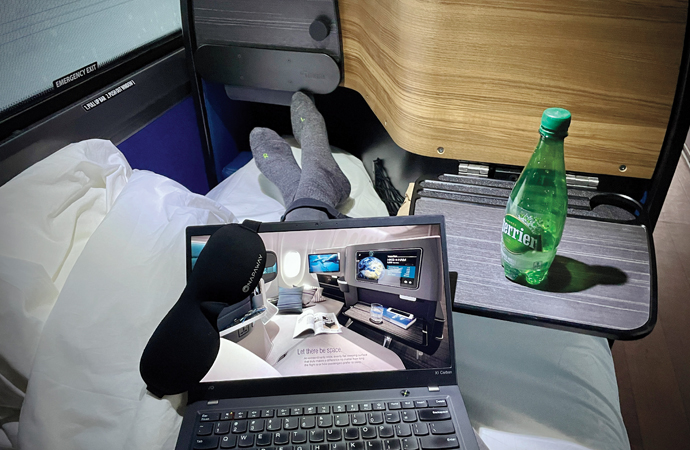
Napaway interior / Photo: Courtesy of Napaway
“Speed isn’t the only factor for travelers,” says Aronov, himself a frequent long-haul flyer. “This is because not all time is the same. ‘Awake time’ isn’t the same as ‘sleep time’; ‘comfortable time’ isn’t the same as ‘uncomfortable time.’ If you factor in the schlep to the airport, TSA checkpoints, flight delays and all the other stressful things that have made traveling by plane so horrible, this is a pretty good option.” He also points out that many people simply hate flying.
Then there’s the growing number of people who are looking for a more eco-friendly way to travel. “This is clearly becoming more important,” says Aronov. “At some point we will be exploring the option of electric vehicles when technologies improve, but even now our trips generate a quarter of the carbon emissions of comparable flights.
“Our core business plan is to have a variety of routes with journey times of between four and 12 hours,” he continues. “Passengers have requested trips from Washington to Atlanta, New York and Boston. Georgia to Florida is another contender. We’re evaluating our next move but are not committing ourselves to any time frame. Right now, everything is up for grabs.” Even Napaway’s sleeper concept may be adjusted. “At some point we may offer a daytime service for passengers who want to look out the windows.”
SeaBubbles
Determined to get more city dwellers to use existing waterways, French start-up SeaBubbles has built what it claims is the first “flying” boat that runs on both electrical energy and hydrogen. “Our vision for public transport is zero wave, zero noise, zero emissions,” says CEO Virginie Seurat. “And in confronting this environmental challenge, we’ve created a pretty cool way to travel.”
Powered by a hybrid system comprising hydrogen fuel cells and an electric battery pack combined with automated and retractable foils, the SeaBubble can cover 50 nautical miles at 18 knots with only four minutes needed for recharging. At 26.1 feet long and 10.2 feet wide, the crafts are ideal for carrying eight to 12 passengers around busy sheltered bays, such as the Sydney and San Francisco waterfronts, and rivers such as Paris’ Seine and London’s Thames.
“We have used a variety of technologies developed by the shipbuilding, automotive and aeronautic industries to come up with a vessel that doesn’t emit CO2,” she says. Yet this is not the only environmental dividend. The boat’s foils enable it to skim along two feet above the water’s surface, reducing the consumption of onboard energy by 35 percent and without creating waves that would accelerate the erosion of the shoreline.
According to Seurat, SeaBubbles’ innovations are symbiotic with the ongoing development of a hydrogen industry and local ecosystems, such as jetties with charging stations. Owned by Mediapps Innovation, the company is setting up pilot routes on Alpine lakes and cranking up production at its workshop in Saint-Jorioz, on the banks of Lake Annecy in Haute-Savoie.
The first SeaBubble vessels will be rolled out in France, Switzerland and the Netherlands before crossing over to the U.S. Interest is high in San Francisco and New York, says Seurat, while one operator in Miami seems keen to order a flotilla. “We are in discussions with three potential partners in the U.S.,” says Seurat.
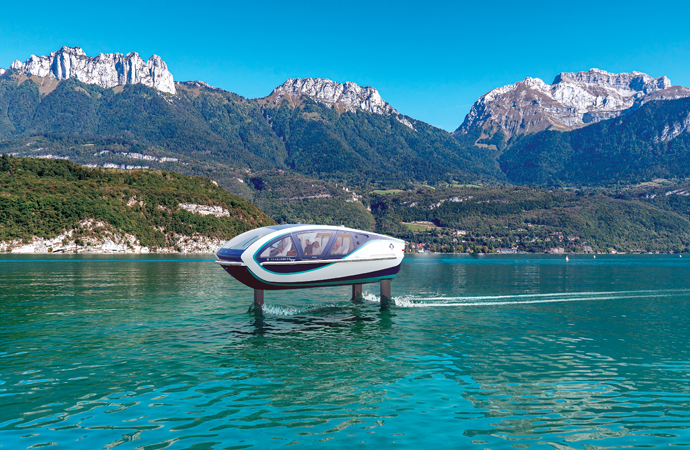
There is also much interest in Singapore and the Gulf states, where several sustainable smart cities are being built from scratch. Last year, SeaBubbles signed a deal with the United Arab Emirates’ Al Masaood Power Division, which is looking to make a customized version of the boat for Dubai Creek and Abu Dhabi’s Corniche. Additionally, the company—like other potential partners in the leisure sector—sees SeaBubbles’ ability to operate with minimal water disturbance as the key to developing ecotourism in protected wetlands.
Eviation
Gregory Davis’ love affair with planes began on his third birthday, when his father and grandfather, an aeronautical engineer, gave him a model kit of a British fighter jet. He earned his glider pilot license at 16, before acquiring both private and commercial pilot licenses. Yet the industry veteran says he is even more excited today, “at the dawn of a new golden age of aviation.”
Davis is CEO of Eviation, an Arlington, Washington-based start-up whose electric battery-powered prototype aircraft, Alice, completed her test flight last year. “Eviation was created to develop an alternative to fossil fuel-powered flight, and Alice’s all-electric MagniX propulsion system is a major step forward for the industry,” he says. “Within a few years this environmentally sustainable aircraft will change how people work and live.”
Eviation is currently working on an electric battery that can be charged in approximately 30 minutes for one hour of flight for short-haul trips of up to 250 nautical miles. “Half of the world’s flights are actually less than 500 miles, so there is no shortage of potential routes,” says Davis, although the next generation of batteries will likely offer longer range.
The sleek Alice can carry nine passengers in comfort. There are panoramic windows with individual electrochromatic shades, 32-inch-pitch seats, and a spacious baggage compartment. “Being electric, it is also very, very quiet,” says Davis.
The “executive” configuration carries three fewer passengers, but the lucky half-dozen get premium furniture and accessories. Stripped for cargo, there is 450 cubic feet of temperature-controlled space.
The company has already signed a deal to supply national flag carrier Air New Zealand with up to 23 Alice planes, and has a letter of intent from New England-based commuter carrier Cape Air for an unspecified number of the aircraft. Launch customer DHL has ordered 12 cargo-configured planes.
Eviation hopes to have both passenger and cargo planes in the skies by 2027. Before then, Davis says he’s excited to try out Alice himself—if not as a pilot, then as a passenger.


